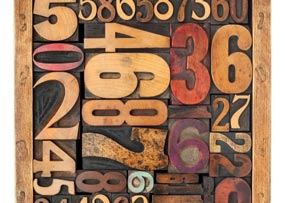 Have you ever wondered how they come up with a three-digit number that can predict whether you’re a good or bad credit risk?
Have you ever wondered how they come up with a three-digit number that can predict whether you’re a good or bad credit risk?
Back in the 1980s, a group of credit grantors, Fair Isaac Corporation (FICO) and one of the three national credit bureaus got together to develop a way to help lenders better predict risk and comply with some of the various consumer protection regulations, such as the Equal Credit Opportunity Act. They set out to develop an automated system that would rank-order the likelihood of a borrower paying on time each month, based entirely on information found in a credit report. (Full Disclosure: I used to work for FICO.)
The hope was that such a system would enable lenders to approve more credit cards and loans to more people without increasing their losses, while ensuring regulatory compliance.
The result was a credit bureau risk score consisting of a three-digit number ranging between 300 and 850 that represented the odds of a borrower paying all credit obligations on time, with higher odds of paying as agreed leading to higher three-digit numbers — and lower future risk to lenders.
Nowadays there are many companies developing and marketing credit scores, yet consumers remain mostly in the dark about how the formulas for these scores originate. And while the fine details of credit scoring formulas are both proprietary and quite complex, a basic underlying knowledge of how scores work can be helpful to anyone trying to manage their credit more effectively.
[Related Article: Can You Really Get Your Credit Score for Free?]
What follows is a very general description of how credit scores are developed:
First, a credit bureau will agree to provide the credit score developers with sets of credit information taken from the credit reports of millions of anonymous consumers, as of two points in time — typically two years apart — for each consumer. While credit scoring can often seem more arbitrary than reality-based, the information used in credit scoring and the impact of that information on a credit score is entirely based on the real-life experience of millions of consumers.
Step 2: Identify the predictive characteristics
Next begins process of observing the various trends and correlations between the first and second sets of credit reports, focusing in on defaults, bankruptcies and other negative credit outcomes, in a search for characteristics among that first set of credit reports that might have predicted some of those outcomes found two years later. For example, the data might show that consumers defaulting on credit card accounts were found to have comparatively high credit card debt in the years leading up to the default. If so, high credit card balances could be among the various predictive characteristics making up a credit scorecard.
Step 3: Build the scorecards
Once a reliable set of predictive characteristics has been established, each is weighted according to its predictive value and organized in a scorecard-like grid, with the various weights for each characteristic represented by a number of points that correspond to the attributes of the credit report being evaluated (scored).
[Credit Score Tool: Get your free credit score and report card from Credit.com]
Step 4: Calculate the score
Once the scorecards are created, the credit reports are ready to be scored. But within each credit scoring model there are a number of different scorecards, each tailored to a specific credit profile that looks at categories, such as the length of credit history, number of credit accounts, and the presence of negative information, among other factors. This multiple scorecard system enables the formula to predict consumer creditworthiness within a wide range of different credit experiences that includes people who have never missed a payment, those just coming out of bankruptcy, and everyone in between. The first step in calculating a credit score is identifying the most predictive scorecard for a particular consumer, followed by compiling the points earned for each of the scorecard characteristics according to the information found in the credit report.
Step 5: Validate the score
Finally, there’s that nagging bit of skepticism — not only among consumers, but also among the score developers themselves at this stage of the process — that questions whether the score actually does what it’s supposed to do. As one way of validating the scoring formula’s ability to accurately predict future risk, a lender will instruct the credit bureau to use the newly developed formula to calculate scores retroactively on some of its own borrowers’ archived credit reports, as of the date the credit was originally granted. This vital step enables the lender to determine the accuracy of the scores through hindsight, such that a successful validation should result in the good performers scoring high and the poor performers having low retroactive scores.
To get a glimpse into how your own credit report is being scored by one of the many credit scoring models, order your free credit score using Credit.com’s Credit Report Card.
[Credit Score Tool: Get your free credit score and report card from Credit.com]
Image: iStockphoto
You Might Also Like
June 4, 2024
Credit Score
March 7, 2023
Credit Score
January 4, 2021
Credit Score







